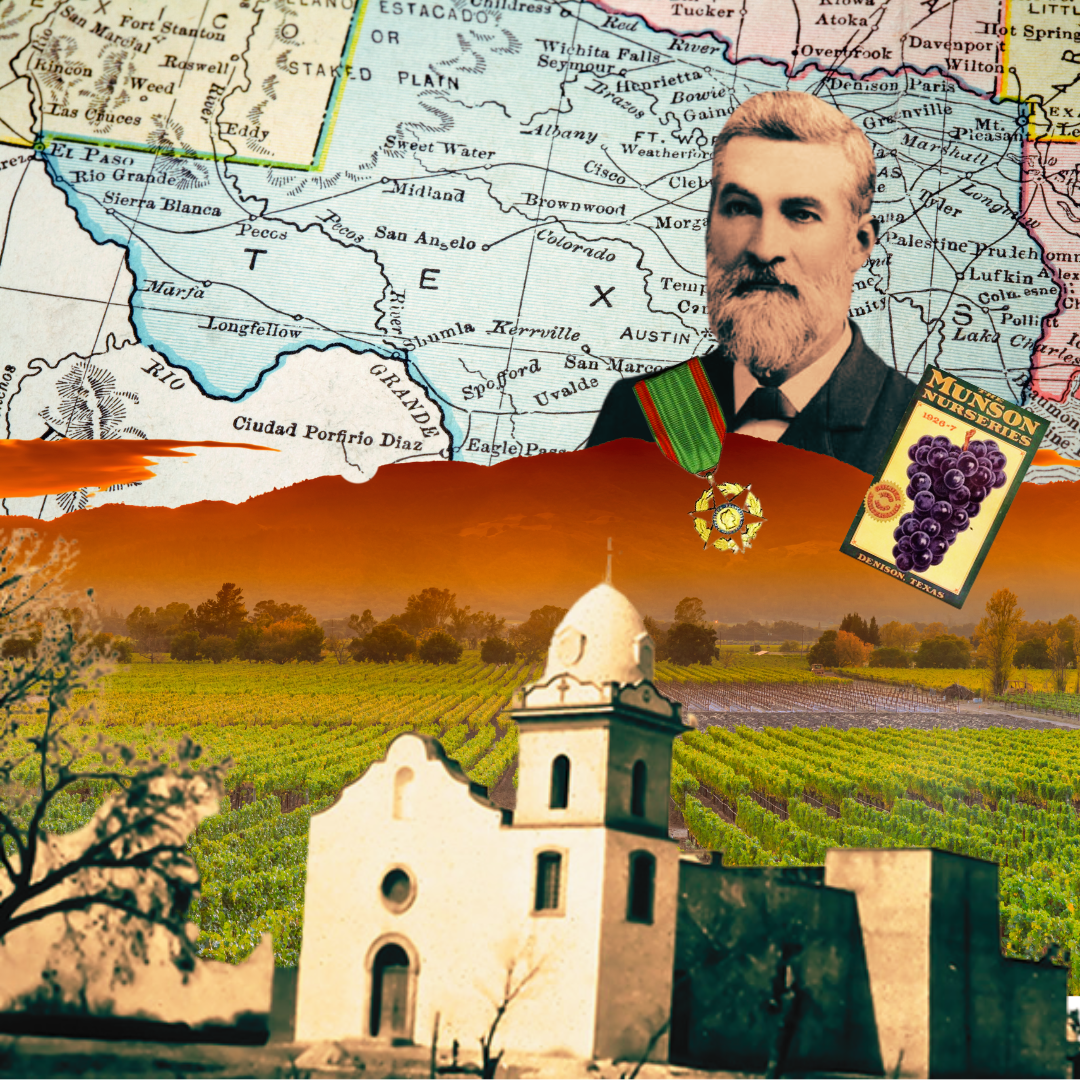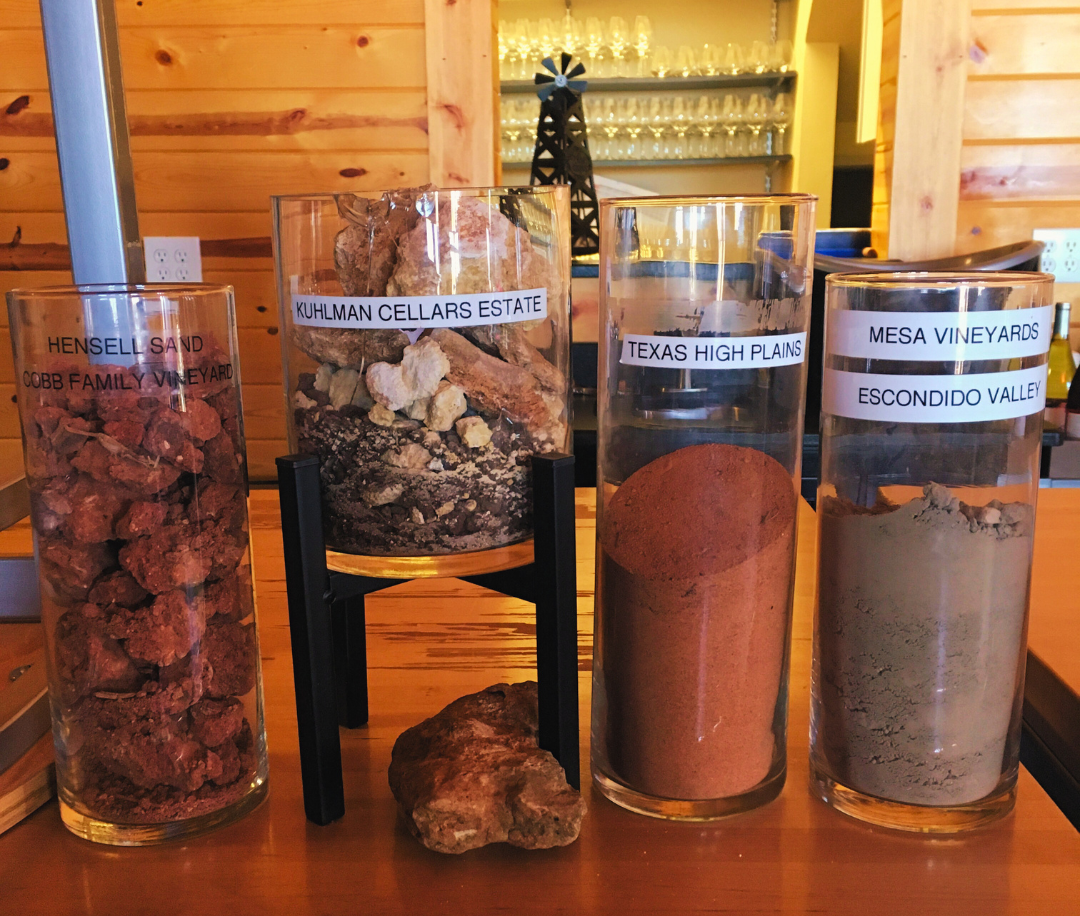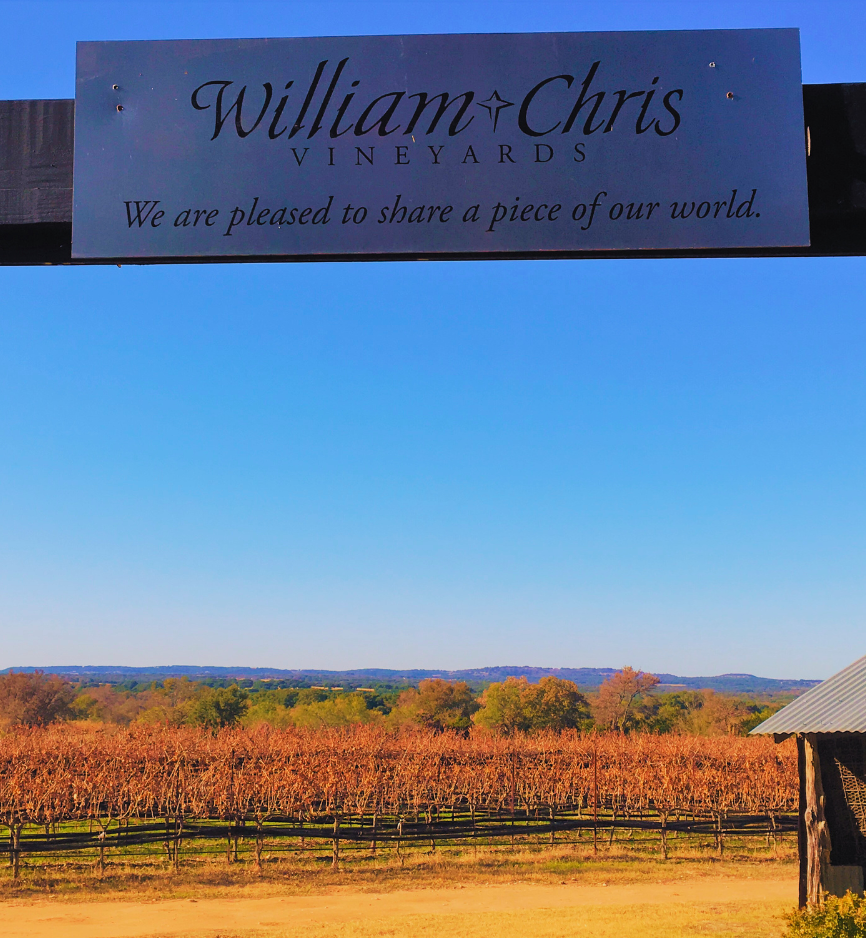TEXAS HILL COUNTRY WINE
Ask yourself what a few things Texas is known for. If you’re a west coast wine lover your answer might include football and cowboy hats before wine makes the list. What a shame since there are some fantastic wineries to be found in the Texas Hill Country. Challenges to make great wine are everywhere but here in Texas they are plentiful as climate, viticulture, and economic forces have kept the Texas wine industry from living up to its potential in the past. The future however remains as big and bright as Texas stars at night. Producers here are steadily improving their quality to impressive levels, giving the major cities of San Antonio and Austin a great reason to travel the 70 miles or so to visit. The short time I had in Texas was focused on the Fredericksburg area within Texas Hill Country where I found an amazing collection of wineries traveling alongside the Highway 290, perfectly suited for wine tourism, ready and willing to offer their unique kind of Texas hospitality.
Being watched over while enjoying a drink at Ellis Hotel, Round Top Texas.
Texas Wine History
Around the late 1600’s vines were brought north into what would later become Texas territroy by Franciscan missionaries, establishing one of the first vineyards at Ysleta Mission near the banks of the Rio Grande. Texas would later play a vital role helping the world move past Phylloxera as viticulturalist and horticulturalist Thomas Volney Munson helped determine the best American vine rootstocks that could survive being planted in the limestone based soils of Europe. Exploring the biodiversity of native vines throughout Texas, Thomas would publish books and exhibit classifications of known species of indigenous grapes for Horticultural societies and expositions in America.
As Phylloxera was spreading through France and Europe, Munson was able to supply French authorities with resistant American rootstock cuttings to graft onto. These would become the rootstocks that would replant the vineyards of Europe but many sent over to France at first would not thrive or be difficult to graft on. The American Vitis Berlandieri grapevine proved to be an answer as the roots had naturally adapted over time to the limestone based soils found in central Texas, similar to other soil types througout Europe. For his work in agriculture Munson would be awarded the French Legion of Honor, as well as Cognac, France later becoming a sister city to Munson’s home in Denison, forever linking Texas to France. That’s some impressive history!
Texas Wine Facts & Figures
Texas AVA map from McPherson Cellars, which has a Californian Temecula Valley connection. Winemaker Kim McPherson is the brother of Jon McPherson, winemaker of Carter Estate Winery & South Coast Winery in Temecula.
To this articles date there are 8 total AVA’s in Texas with the major regions being the Texas High Plains, Texas Hill Country and its smaller sub areas of Bell Mountain and Fredericksburg. The Texas Hill Country AVA is massive even for a state known for its prideful boastfulness. With around nine million acres in total area (3.6 million ha) it is second in size in America only to the Upper Mississippi River Valley AVA that stretches from southern Minnesota to northwest Illinois. At slightly under the 30th Parallel North, this AVA is the southernmost in America, putting it south of Ensenada, Mexico and roughly on the same circle of latitude as Cairo, Egypt. Only around 1,000 acres of this massive region are currently planted as of this writing which is a reason why you’ll see grapes sourced from throughout the Texas AVA’s and even California sometimes in the wines here.
Bills are being brought to the state Legislature currently to increase the use of the Texas appellation on wine labels from the 75% minimum of in state grapes to 100%. This is supported by the passionate industry professionals of the nonprofit Texas Wine Growers. Those opposed to the increase cite the challenges of grape sourcing from difficult weather years and losing the ability to make adjustments during winemaking that would increase quality. The competitive fire from winemakers and the desire to promote Texas wine ensures that you’ll see less and less reliance of California grapes in the future though, no matter the outcome of any legislation.
Texas Hill Country Geology
A unique geologic feature of Texas, a desert savanna called the Edwards Plateau, engulfs Texas Hill Country in its southeastern portion. This uplifted region is largely formed of limestone from past marine deposits. The dry climate keeps soil erosion low here on its western end and the land sparse, expansive and flat. Hill Country to the East formed as wetter conditions wore down limestone soils over time, exposing deeper layers of granite and other harder rocks.
Texas Hill Country Climate
Marsanne grapevines at Kuhlman Cellars
Weather hazards here make grape growing not for the faint of heart as frost risk, hail, heat waves and tropical rain events bringing a deluge of rain can all be factors in the vineyard. Like southern California’s Temecula Valley, Texas viticulture has been afflicted by Pierce’s disease in the past, a devasting ailment spread to vines through the glassy winged sharpshooter insect. With the help of controlled monitoring along with introducing predatory insects and insecticides if necessary, the risk has gradually diminished. Severe frost damage is always a hazard, occurring in large amounts during the 2013 vintage and also the risk of hail which influences vineyard canopy management and netting decisions. Marsanne is not widely planted but could be a rising star for the white wines of Hill Country as it consistently produced high quality in every tasting room I enjoyed it in. The grape is late budding, reducing the risk of frost along with being less mildew prone since it clusters are looser and not as tightly packed together. A huge advantage with the high humidity of the growing season during Texas summers.
2019 Texas Production Totals (Tons)
In a state as vast as Texas it’s not surprising that each AVA favors a certain grape. In the Texas High Plains AVA Cabernet Sauvignon is king, grown in red sand and clay soils at elevations that can grow as high as 4,000 ft, allowing a welcome relief for the grapes against the higher humidity of the south. Warm days of sunshine, cool nights and high winds keep this AVA highly productive. Around 80% of Texas grapes come from vineyards here.
Hill Country has large plantings of Tempranillo grapes that supply the red blends and single varietal wines found in wineries alongside the Highway 290. Mourvèdre, Sangiovese, Viognier and Merlot currently round out the rest of the top five in production throughout the entire state. In addition to the main grapes listed previously, Texas has some exciting plantings that may yield some future star varietals for the state such as Sagrantino, Aglianico, Tannat, Arinto and Touriga Naciona among others.
Wine Tasting on Highway 290
Hilmy Cellars
“What I appreciate most about Texas is the generosity of people in this business. Many experienced hands have come before us, have shared their guidance, and it has already made a difference.” -Founder Erik Hilmy
In 2009 owner Erik Hilmy started Hilmy Cellars, planting his estate “Home Block” vineyard which now includes Sangiovese, Tempranillo, Tannat, and Petit Verdot grapevines as their 100% proudly raised Texas fruit. There is something for everyone here as the winery features Viognier, Albarino, and Rousanne blends among others for white wines as well as Cabernet Franc, Malbec, Tempranillo and more for red wines. The red wine style here is restraint so don’t expect aggressive oak flavor to be a dominant characteristic. While the winery is young its goals are long term as they aim to release wines only when they are ready and capable to age for years to come.
Heath Sparkling Wines
The clean, sleek and modern Heath Sparkling Wines in Texas Hill Country
Sparkling Chenin Blanc and Pinot Noir blends ready for your visit.
Heath Sparkling Wines is a sleek modern winery dedicated to bringing the art of the bubble to Texas. Wines here start with grapes destined to be made into sparkling wine, prized for their higher acidity and crafted using the méthode champenoise process. Due to the aging requirements for their sparkling wine, Heath was pouring the 2015 and 2016 examples of their Euphoria and Adoration sparkling wines. Both Euphoria wines are Chenin Blanc dominant with varying amounts of Muscat Canelli which offers aromatic peach stone fruits. The 2015 vintage is entirely Pinot Noir with a surprisingly deep crimson hue while the 2016 Adoration is Pinot Noir dominant with Cabernet Sauvignon blended in. Above all the wines here are fun, with aromatic and flavor intensity prized above all.
There are light snacks given to complement the flavors of each sparkling wine in the flight with a bitters dashed sugar cube added to the 2015 Adoration meant to act as an aperitif. While entertaining, I found the transformation to a wine cocktail slightly distracting considering the extra attention needed to create the wine in the first place. Crafting sparkling wine is an expensive ordeal as it requires specialized winemaking, expensive equipment and a higher cost to produce, having this kind of major investment shows how far Texas wine has come and how far Heath Sparkling Wines will help it go in the future.
Kuhlman Cellars
Kuhlman Cellars does an amazing job explaining the various soil types of Texas.
Kuhlman Cellars has an amazing offering of wines along with impressive knowledgeable staff to answer any questions that might come to mind. This winery is already off and running considering that it only opened in late 2014 and is already producing such great quality. White chalky caliche soils with thin layers of clay in some areas dominate the estate vineyard. While the clay can retain moisture, the caliche is well draining and provides a great mineral component to the wines made here. The Kuhlman Estate White is a wonderfully fragrant blend of Marsanne and Roussanne with apricot and honeysuckle aromas and golden apple and ripe pear flavors.
On the tasting flight also was a great example of Sauvignon Blanc, sourced from the West Texas Escondido Valley with alluvial soils and calcium rich topsoil found on the flattened limestone mesas of Hill Country. The 2016 Barranca red blend including Tempranillo, Petitie Sirah, Mourvedre, and Carignan is a great wine for anyone seeking a rich ripe fruit profile with silky polished tannins. One big surprise I experienced all over Hill Country was the consistent high quality from the wines featuring Merlot. Standouts being the Kuhlman Cellars 2016 Reserve Merlot and 2017 Marl blend, Merlot with a slight addition of Petite Sirah.
William Chris Vineyards
Make sure you come to this winery next time you’re in Texas Hill Country!
Estate vines at William Chris Vineyards, resting for the next harvest.
William Chris Vineyards is worth the visit to Texas all by itself. Owners Bill Blackmon and Chris Brundrett decided to combine their wine growing and winemaking experience together in 2008 to create wines that are Texas Hill Country at its finest. The sparkling Petillant Naturel Rose which is unfiltered, complex and slightly funky in the best way was a highlight along with the Mourvèdre wines they produce. In addition to their estate vineyard the winery sources fruit from some of the best vineyards throughout Texas.
The 2017 Hunter Merlot Malbec blend sources Merlot from the Hunter vineyard, originally planted in 1986 in Brownfield Texas with sandy loam soils over clay and a calcareous sub-soil. Easily the best wine I tasted in Texas. Blended lots were fermented in older oak separately and then brought back together and aged for 22 months in 30% new French oak barrels. The property is stunningly beautiful with old growth oak trees dotting the landscape and a spacious tasting room offering amazing views of the vineyard.
Hopefully by now you’ve realized that Texas wine is more than some average Blanc du Bois you had in your glass years ago. When you visit this hidden gem of a wine region, you’re pretty much guaranteed to have a great time, wine snob or not, as the amount of outstanding and good quality wines are plentiful. A state as prideful and big as Texas might not be used to being an underdog but the truth is the best is yet to come here as talented winemakers and vinegrowers continue to craft the identity of Texas wine. While we may only just be getting glimpses now of the finished product, we all get the privilege to pop some Texas wine corks and enjoy the journey on the way.
Sources- "2019 Texas Wine Grape Varieties Agricultural Counts." United States Department of Agriculture National Agricultural Statistics Service, USDA, www.nass.usda.gov/Statistics_by_State/Texas/Publications/More_Features/tx-wine-grape-varieties-2019.pdf.



















